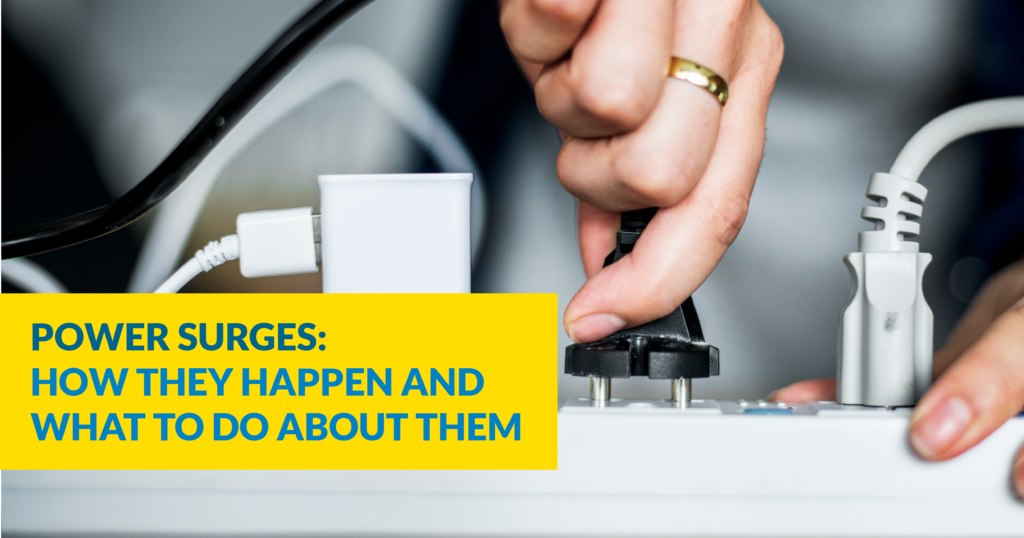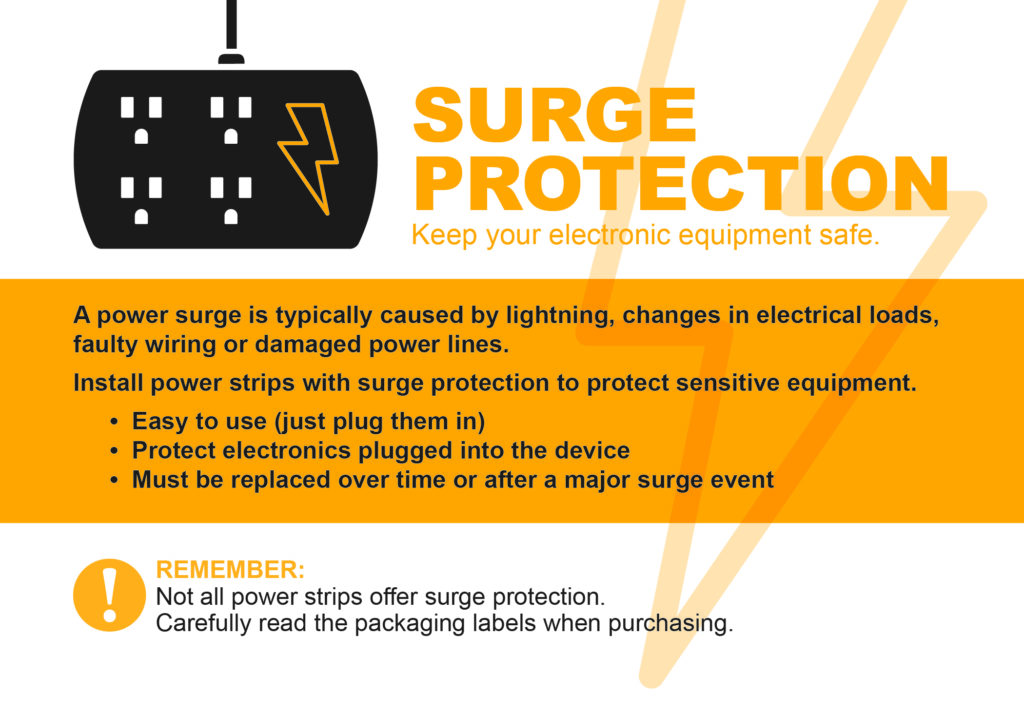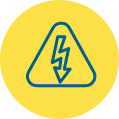
Although it takes only a split second for a power surge to occur, this massive spike in electricity can wreak havoc – damaging electronic devices, appliances and electric outlets in a home. Since we get many service requests relating to power surges, we wanted to share some helpful information on this topic. Of course, it isn’t always possible to prevent a power surge. Some causes, such as power outages and weather, are impossible to control. However, by being prepared it is often possible to minimize power surge damage.
What Causes Power Surges?
Power surges are just as the name suggests: surges of electrical power that are higher than normal. There are several causes for a power surge including the following:
- Electrical Overload. Electrical overloads can occur when too much power is drawn from a single circuit. This happens most commonly from overusing extension cords and plugging in too many devices into the same circuit.
- Faulty Wiring. Faulty wiring is a potential internal cause of power surges, which are more likely to happen with damaged or exposed electrical wires. It may not be easy to see faulty wiring, especially if it’s located behind walls. However, there are other signs that faulty wiring is present. These signs include outlets with burn marks, a burning smell coming from wiring or outlets, a buzzing sound coming from outlets, and circuit breakers frequently tripping. If you see these signs, unplug any connected electrical devices immediately and turn off electricity to the area if possible. It’s best to contact a certified electrician if you suspect faulty wiring.
- Lightning Strike. Lightning damage usually results from a direct strike on power lines, which produces a large voltage. This creates a spike in voltage, which in turn causes a significant power surge.
- Power Outage. While the lack of electricity during a power outage doesn’t usually cause any issues, the return to connection often can. It’s common to experience a sudden jump in current when power is restored.

How Can You Protect Your Home From Power Surges?
There is no way to predict or prevent every power surge but the following suggestions can be helpful to mitigate damage to home appliances and electronics:
- Unplug everything during a storm. This may be the single best way to protect your home appliances, computers and smaller electronic devices like gaming systems.
- Use appliance-grade surge protectors for sensitive electronics. Surge protectors with a high joule rating (2000+ joules) can help protect critical appliances in the event of a power surge. Consider purchasing appliance-grade surge protectors for your home’s computer, refrigerator, washer and dryer, air conditioning unit or home theater system.
- Have an electrician evaluate your wiring. If you live in an older home, it is worth having a licensed electrician evaluate your wiring. Old, outdated wiring can fall into disrepair and may cause surges. Even with newer homes, it can be helpful to have an experienced electrician “audit” your wiring to identify any potential future issues.
- Beware of the post-outage surge. One minute, all the lights are out and then suddenly the electrical system experiences a large jolt of electricity as everything powers back up. If you find yourself in the middle of an outage, power down all electronics and unplug everything.
- Distribute your appliances. Since electrical outlets, extension cords and even power strips can easily become overburdened, it is wise to distribute appliances between outlets and surge protectors. For example, use dedicated surge protectors and outlets for the television and computer, rather than combining them. Distributing where appliances are plugged in can help prevent outlets from becoming overburdened.
